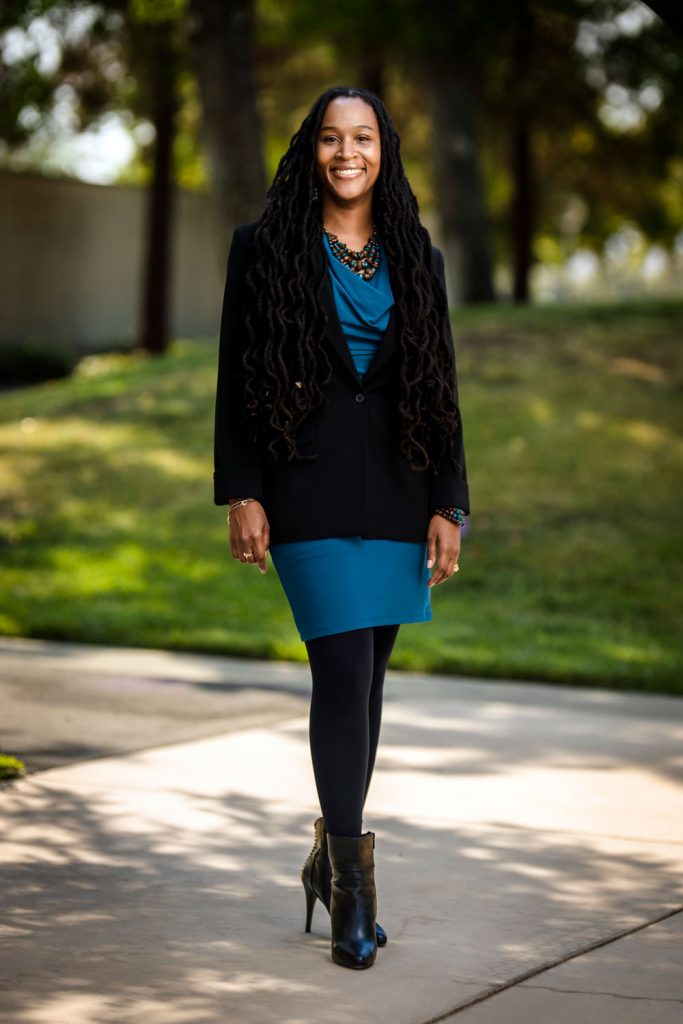‘Invest in yourself’ to create new opportunities

For Karla Morris, the journey from her roots in Costa Rica to computer scientist at Sandia/California was marked by challenges and obstacles — and many successes. She is now Sandia’s software lead for a nuclear-weapons project.
“I am so fortunate to have landed at Sandia and to have a career that constantly challenges me,” Karla said. “Sandia gives you the opportunity to play with ‘big-kid’ toys and to collaborate with the best scientists in so many fields.”
She credits her success to hard work, perseverance and an extensive support network, which includes her family, professors, mentors and colleagues. Karla recently was honored with the 2022 Black Engineer of the Year Award for Most Promising Scientist in Government.
“I work with wonderful teammates who are so willing to share their expertise, which is essential when you work on big projects like the ones we have at Sandia. No one person can accomplish these projects on their own,” Karla said.
Discovering a love of math
Growing up in Costa Rica, Karla said her mother encouraged her to participate in drama, dance, music and visual arts. It wasn’t until she joined a competitive math league at age 14 that she realized she enjoyed solving problems and had an aptitude for math.
After graduating high school, she spent a year studying electrical engineering at Tecnolόgico de Costa Rica before immigrating to New York to join her mother and siblings. She spent the next year learning English while working various jobs cleaning office buildings, providing home care for seniors and teaching dance. After she passed the Test of English as a Foreign Language, she attended the Borough of Manhattan Community College, receiving an associate degree in engineering science in 1999.
Upon the suggestion of a professor, she transferred to City College of New York, graduating in 2002 as the valedictorian of the School of Engineering with a bachelor’s degree. She started work at a power plant but was fired after just two days because of an immigration paperwork problem. While she worked to rectify the issue, Karla decided to pursue additional education at the suggestion of a CCNY professor. She added three degrees to her resume in the next six years: a master’s and doctorate in mechanical engineering and a master’s in philosophy. She also got married and had two children during this time.
A Sandia connection
Damian Rouson, one of her doctoral advisers, introduced her to Sandia, where he was a manager in the Combustion Research Facility. She became a visiting researcher, helping develop Morfeus, or Multiphysics Object-oriented Reconfigurable Fluid Environment for Unified Simulations, a project funded by the Office of Naval Research.
In 2011, she was hired for a Combustion Research Facility staff position, during which she led the development of complex computing codes and models to enable extreme-scale simulations incorporating uncertainty. She also served as the software engineering lead for several Sandia projects.
In 2013, Karla heard about an opportunity in the Scalable and Secure Systems Research department and decided to pursue it. “Best decision I ever made,” she said. “I was at the point where I wanted to learn something new, and this was my chance.”
She learned about formal methods — proving that digital systems will behave as intended and ensuring that safety, security and reliability requirements are satisfied — and how to apply them to high-consequence systems. She became the formal methods software lead for a W80-4 warhead controller unit.
Invest in yourself
Mentors have played, and continue to play, a major role in her career, Karla said, creating a network she has relied on during different stages of her Sandia experience. She said the best piece of advice she ever received was to always be preparing for new opportunities that might come your way.
“Invest in yourself by carving out time to learn something new that will create new opportunities for you,” she said. “Sandia management has always been supportive of this and has encouraged me to work with other departments in order to grow my career.
“You’re allowed, even encouraged, to have a second career at Sandia. There’s no reason to be bored; you always have the opportunity to do something new,” she added.